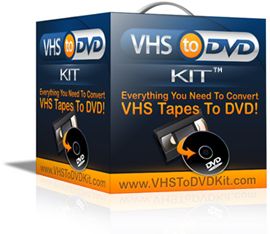The transfer of a video cassette recording to DVD involves the capture and digitisation of the analogue video, editing the digitised video as necessary and compressing this prior to burning it to DVD. There are various methods of accomplishing this, varying in ease of operation, speed, quality and cost.
A typical video capture card is a system of hardware and software which together allow a user to convert video into a computer-readable format by digitising video sequences to uncompressed or, more normally, compressed data files. Uncompressed video is an unwieldy beast, so some kind of compression has to be employed to make it more manageable. The compression formulae and techniques used to compress video during capture and decompress it again for playback are known as codecs. Codecs can be employed in software or hardware, but even in the age of GHz-speed CPUs a hardware codec is necessary to achieve anything near broadcast quality video.
Though DVD quality video is defined with the MPEG-2 codec, DVD players typically support the MPEG-4 codec. Defined by the Moving Picture Experts Group (MPEG), the working group within the International Organisation for Standardisation (ISO), the MPEG-4 specification was finalised in 1998 and became an international standard in 2000. It is designed to deliver quality video at lower data rates and smaller file sizes. The standard incorporates the Advanced Audio Coding (AAC) codec. Developed by the same people who created the popular .mp3 file format, AAC provides much more efficient compression than MP3 with a quality rivalling that of uncompressed CD audio.
Refer to the PCTechGuide pages on video compression for more information on codecs and how they are employed in digital video.
Digitisation is performed by a video capture card which converts each analogue frame of video into a series of bitmapped images to be displayed and manipulated on the PC. This takes one horizontal line at a time and, for the PAL system, splits each into 768 sections. At each of these sections, the red, green and blue values of the signal are calculated, resulting in 768 coloured pixels per line. The 768 pixel width arises out of the 4:3 aspect ratio of a TV picture.
Out of the 625 lines in a PAL signal, about 50 are used for Teletext and contain no picture information, so they’re not digitised. To get the 4:3 ratio, 575 lines times four divided by three gives 766.7. Since computers prefer to work with whole numbers, video capture cards usually digitise 576 lines, splitting each line into 768 segments, which gives an exact 4:3 ratio.
Thus, after digitisation, a full frame is made up of 768×576 pixels. Each pixel requires three bytes for storing the red, green and blue components of its colour (for 24-bit colour). Each frame therefore requires 768x576x3 bytes = 1.3MB. In fact, the PAL system takes two passes to draw a complete frame – each pass resolving alternate scan lines.
The upshot is that one second of video requires a massive 32.5MB (1.3 x 25 fps). Adding a 16-bit audio track sampled at 44kHz increases this by a further 600KB per second. In practice, however, some boards digitise fewer than 576 lines and end up with less information, and most boards make use of the YUV scheme.
Scientists have discovered that the eye is more susceptible to brightness than it is to colour. The YUV model is a method of encoding pictures used in television broadcasting in which intensity is processed independently from colour. Y is for intensity and is measured in full resolution, while U and V are for colour difference signals and are measured at either half resolution (known as YUV 4:2:2) or at quarter resolution (known as YUV 4:1:1). Digitising a YUV signal instead of an RGB signal requires 16 bits (two bytes) instead of 24 bits (three bytes) to represent true colour, so one second of PAL video ends up requiring about 22MB.
The NTSC system used by America and Japan has 525 lines and runs at 30 fps – the latter being a consequence of the fact that their electric current alternates at 60Hz rather than the 50Hz found in Europe. NTSC frames are usually digitised at 640×480, which fits exactly into VGA resolution. This is not a co-incidence, but is a result of the PC having been designed in the US and the first IBM PCs having the capability to be plugged into a TV.
- Transfer VHS to DVD Method
- VCR to DVD – Video Digitisation and Compression Codecs
- VCR to DVD Conversion – Video Capture Cards and PC Hardware
- How to Transfer VCR Video to DVD – Preparation
- Converting VCR Video to DVD Using Canopus ADVC-55
- Connecting External DV Converter Hardware to VCR and PC for VHS Video to DVD Transfer
- Testing the External DV Converter
- Installing the Software for the ADVC-55 DV Converter – including NERO
- One-Click Operation of VHS Video to DVD Transfer Using ADVC-55
- Rip / Import / Copy VCR VHS Video and Burn to DVD with Nero
- Labelling your DVDs – tutorial on how to transfer your VCR tapes to DVD
